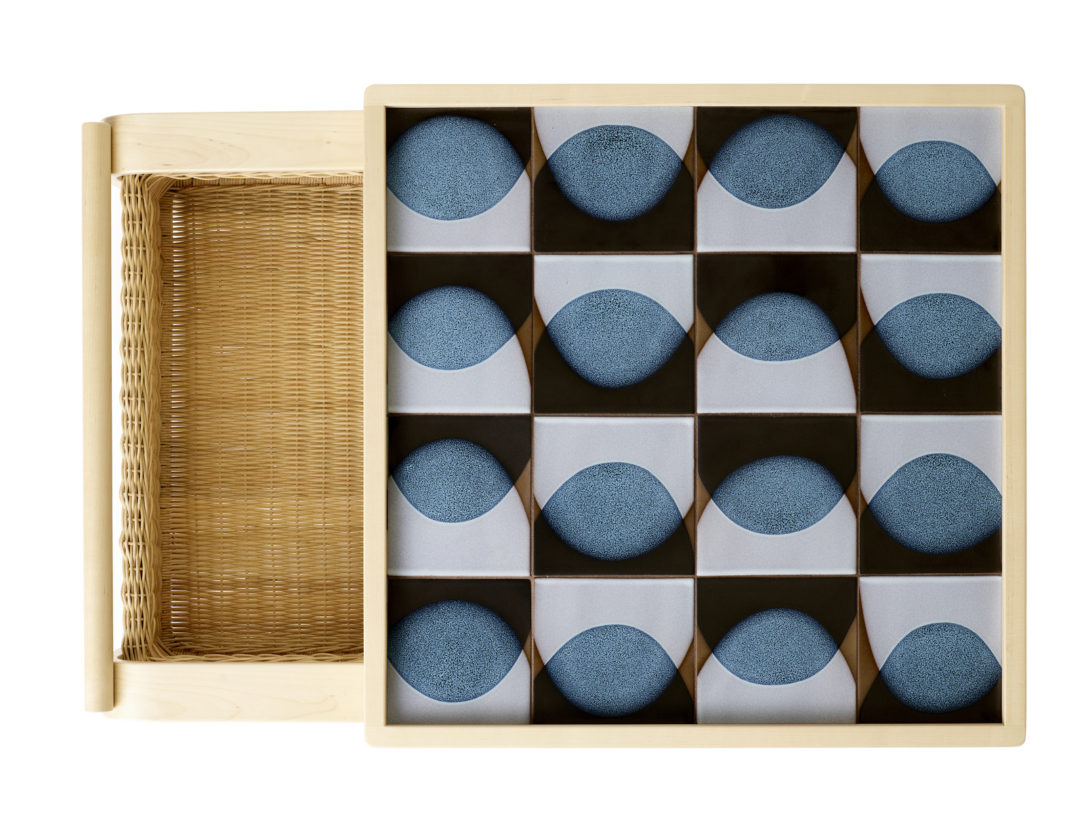Bold, saturated blues are having a moment in Scandinavian design, but design experts versed in the traditionally timeless aesthetic are wary to call it a trend. “Scandinavians always favor a lot of blue in their homes,” says Christopher Sharpe, an architect from Denmark and co-owner of Norden Living in San Francisco’s Mission District.
“It looks great against all the white and light woods,” adds his business partner Terje Arnesen, a Norwegian-born interior designer whose Bay Area clients come into the shop for anything from one conversation piece to a full-on remodel.
“We have so much midcentury design in California,” says Arnesen. “You see a lot of people taking great pride in re-creating what these houses were meant to look like. Naturally, they go after Scandinavian design.”
Sustainability, for one, is something both the Bay Area and Scandinavian countries prioritize and that comes in part from holding on to quality, timeless pieces but also using low-emission production practices and sustainably sourced materials in the design process.
“There’s a really big push in countries like Denmark and Norway to incorporate sustainability into design — both from the products and materials that designers use to the production process,” Sharpe says.
New furniture and product designers are also looking for ways to advance Scandinavian design while staying true to its hallmarks: simplicity, functionality and attention to pure, honest aesthetics. Sharpe and Arnesen visit the Stockholm Furniture and Light Fair each year in search of emerging Nordic designers to represent in their store (current favorites Cecilie Manz and Simon Legald come out of Copenhagen).
“Traditional Danish furniture designers didn’t really like to veer off of what was known, and what had proven to be good design,” says Sharpe. “Newer companies like Muuto and Normann Copenhagen are setting a new tone for what Scandinavian design could be; that is, more flexible, experimental, playful, but still maintains a tradition of good craftsmanship.”
Case in point: Simon Legald’s Day Wall Clock for Normann Copenhagen, which at first glance appears understated but then offers up elegant details from every angle: visible gears, a domed-shape glass, a serrated frame in a bright blue hue.
The Bay Area’s Heath Ceramics recently collaborated with Finland furniture company Artek to reimagine Alvar Aalto’s legendary Stool 60 and Tea Trolley 900 for a limited-edition collection. (Aalto and his wife, Aino, co-founded Artek in 1935.) Tung Chiang, Heath’s clay studio director in San Francisco, was up for the task — a dream project for someone who has a dog named Aalto and who has a collection of 23 original Stool 60s.
“I didn’t want to redesign the stool, but yet I wanted to put our spin on it,” Chiang says. “I think my job at Heath is to find out how we can respect the legacy from the past but yet at the same time create something new.”

A visit to the Artek factory in Helsinki, where Chiang says he witnessed what looked like a topography of tables, inspired him to redesign the stool into a nesting set of three where all stools uniformly touch the ground, a more functional upgrade that allows you to sit securely on the top stool without removing the ones underneath.
Silk-screened over the stool’s wooden top is Heath’s Universe glaze, which was developed in 2016 by Chiang and Heath master glazer Winnie Crittenden in what you might call a happy accident. Crittenden, who is Edith Heath’s niece, simply wrapped a piece of plastic around still-wet clay to keep it fresh. When she later peeled off the plastic, she realized the moisture had formed droplets of water that created a pattern.
For Universe, the designers used the plastic to transfer beads of glaze onto the clay and then ran their fingers along the plastic at different pressure points to produce a unique variation. Through trial and error, Chiang says, they came up with a system to control the glaze and apply layers that eventually “created almost a depth of field.”
“We are both fascinated about the Milky Way, so we thought why don’t we put blue as the background,” says Chiang, which meant incorporating cobalt into the glaze to create a dark blue sky effect.
Heath’s new collection of 36 trolleys with six tile designs are inspired by Heath’s vintage collection as well as newer experiments like the Universe pattern. The Tea Trolley 900, designed in 1937, remains one of Aalto’s most iconic pieces. Drawing on British tea culture, features a bent-wood frame, a rattan basket and a tray-top inlaid with ceramic tiles. Chiang says it transitions well to almost any decor, from Victorian to modern to a cottage in New England, which could be true for all Nordic design.
“It’s the L-E-S-S that makes the timeless work,” he says. “It’s not the time itself. It’s how you design things with less to make it achieve its best.”
This article was originally published in the San Francisco Chronicle

